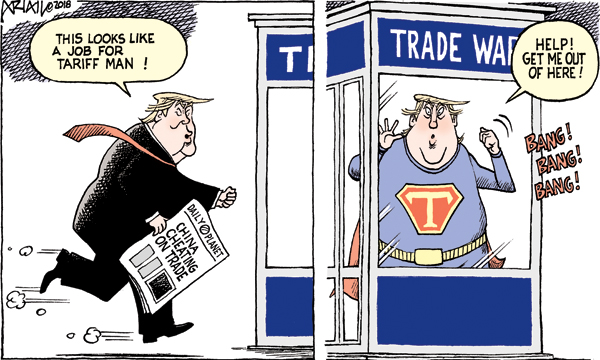On Dec. 1 in Buenos Aires, U.S. President Donald Trump and his Chinese counterpart, Xi Jinping, agreed on a 90-day moratorium on increases in import tariffs to provide a window for negotiations. Unfortunately, this approach to mediation does not always succeed and investors were not impressed — as was evident in the 800-point fall in the Dow Jones Industrial Average on Dec. 4. And if markets were skeptical then, they will be even more skeptical now, with the arrest of Huawei Chief Financial Officer Meng Wanzhou for violating U.S. sanctions on Iran.
The two presidents' approach to relieving trade tensions does have ample precedent, but such episodes provide little grounds for hope. In February 1930, the League of Nations convened an international conference in Geneva to address the problem of proliferating protectionism that "obstructed the development of large-scale production and impeded European recovery" and was deployed more generally as a "weapon of economic warfare." Thirty countries sent delegations. The United States, though not a member of the league, sent Edward C. Wilson, the first secretary at the U.S. Embassy in Paris.
In advance of the negotiation, the Economic Committee of the league drafted a convention for a two-year customs truce. But the delegates accepted neither this draft convention nor a scaled-down version submitted subsequently by the French. New states with ambitious industrialization plans were not prepared to abandon them (shades of "Made in China 2025"). Countries running chronic deficits were loath to sign onto the agreement absent a commitment by others to take more of their exports (an objection that will resonate with Trump).

















With your current subscription plan you can comment on stories. However, before writing your first comment, please create a display name in the Profile section of your subscriber account page.